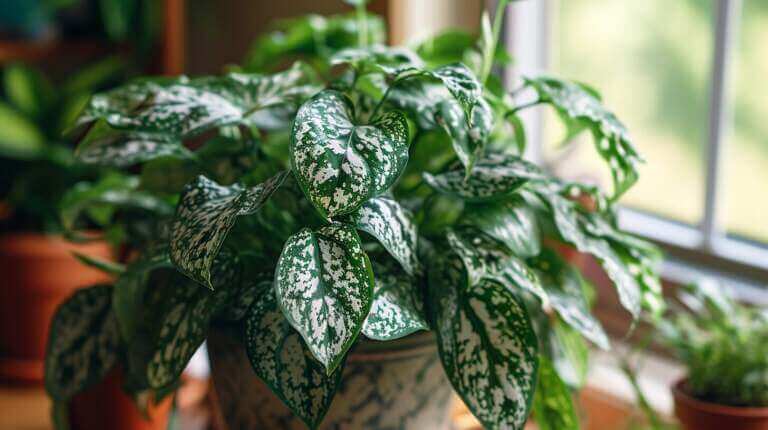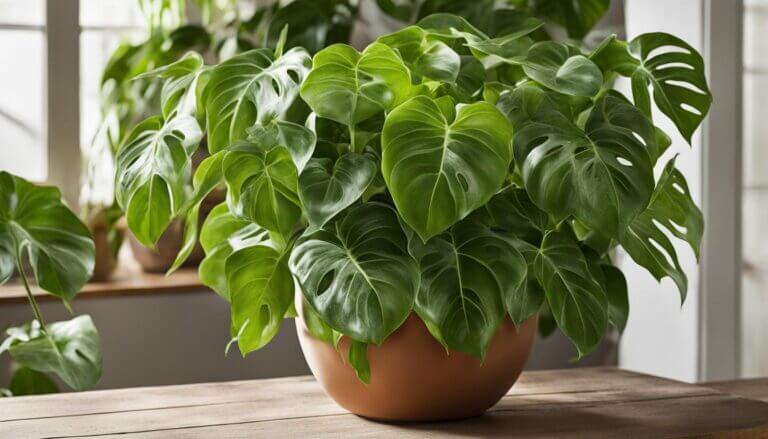How To Propagate Calathea Plant: Starting New Plants from Cuttings and Division
Propagating Calathea plants is a popular and cost-effective way to expand your collection or share the joy of plant parenthood with others. By learning the proper techniques for propagation, you can successfully start new plants from cuttings and division. This comprehensive guide will provide you with step-by-step instructions, tips, and insights on how to propagate Calathea plants effectively.
Key Takeaways:
- Calathea plants can be propagated through cuttings or division.
- Propagation allows you to create more space for your plants and maintain their health and vitality.
- Division is often considered the best method for Calathea plants due to their fragile roots.
- Follow a step-by-step guide to successfully propagate Calathea plants through division.
- Provide proper care, humidity, indirect light, and adequate drainage for successful Calathea propagation.
Why Propagate Calathea Plants?
Propagating your Calathea plants offers numerous benefits that make it a worthwhile endeavor for any plant enthusiast. By understanding the reasons behind propagating Calathea plants, you can make informed decisions about when and how to propagate them.
One of the key reasons to propagate Calathea plants is to create more space for your growing collection. As these plants mature, they can become rootbound and outgrow their current pots. By dividing them through propagation, you can provide them with the space they need to continue thriving.
Another advantage of propagation is the opportunity to maintain the health and vitality of your Calathea plants. Through division, you can separate any damaged or unhealthy sections, ensuring that only the strong and healthy parts continue to grow. This helps to prevent the spread of diseases and promotes the overall well-being of your plants.
The Benefits of Calathea Plant Propagation
“Propagation is not only a practical solution but also a chance to share the beauty of Calathea plants with fellow gardeners.”
In addition to practical benefits, propagation also opens up possibilities for expanding your Calathea collection or sharing plants with others. By successfully propagating your plants, you can create new specimens to add variety to your indoor garden or give them as thoughtful gifts to fellow plant enthusiasts.
Whether you are looking to create more space, maintain plant health, or share the joy of Calathea plants, propagation is a valuable method to achieve your goals. In the following sections, we will explore the different propagation methods available and provide you with a step-by-step guide to propagate Calathea plants successfully.
Calatheas Propagation Methods: Cuttings vs. Division
When it comes to propagating Calathea plants, there are two main methods to choose from: cuttings and division. Both methods have their advantages and can be successful, but understanding the differences between them is essential to ensure the best outcome for your plants.
Calathea Cuttings:
Cuttings involve taking a portion of the stem with leaves and rooting it in water or soil. This method allows you to create new plants from healthy stems and encourages faster growth. To propagate Calathea plants through cuttings, carefully remove a stem with a sharp knife just below a leaf node. Place the cutting in water or a well-draining potting mix and provide it with indirect light and high humidity. With proper care, the cutting will develop roots and establish itself as a new plant.
Calathea Division:
Division, on the other hand, involves separating the plant into smaller sections with their own root systems. This method is particularly suitable for Calathea plants as they often form natural divisions in their root systems. To propagate Calathea plants through division, gently remove the plant from its pot and separate the natural divisions in the roots with your fingers or a sharp knife. Each divided section should have its own set of roots and leaves. Pot the divided sections in well-draining soil, water thoroughly, and provide them with appropriate care to ensure successful growth.
While both methods have their merits, division is often considered the preferred propagation method for Calathea plants. The fragile roots of Calathea plants make them more susceptible to damage during the cutting process. Division allows the plant to maintain its existing root system, reducing stress and ensuring a smoother transition to a new pot. However, if you have a healthy Calathea plant with strong stems, taking stem cuttings can also be a viable propagation method.
| Propagation Method | Advantages | Disadvantages |
|---|---|---|
| Cuttings | Allows for faster growth | Can be more challenging for Calathea plants due to fragile roots |
| Division | Preserves existing root system | Requires established natural divisions in the root system |
Step-by-Step Guide to Propagating Calathea Plants
To successfully propagate Calathea plants through division, follow these steps:
- Water your plants well beforehand to loosen the soil and reduce stress.
- Prepare new pots with well-draining potting soil and gather necessary tools like a sharp knife and a trowel.
- Gently remove the Calathea plant from its pot and separate the natural divisions in the roots.
- Carefully separate the roots using your fingers, avoiding unnecessary cutting or breaking.
- Trim off any damaged or diseased roots.
- Place the new plant in a pot, allowing the roots to dangle down the sides, and fill the pot with soil.
- Water the plant thoroughly until water seeps out of the drainage holes.
- Consider covering the plant with a plastic bag to create a greenhouse effect and aid in new growth.
Propagating Calathea Plants with Cuttings
If you prefer to propagate Calathea plants through cuttings, follow these additional steps:
- Choose a healthy stem with at least two sets of leaves.
- Using a sharp and sterilized knife, make a clean cut just below a leaf node.
- Remove the lower leaves, leaving only a few at the top.
- Place the cutting in a glass of water or in a pot with moistened potting soil.
- Keep the cutting in a warm and humid environment until roots form.
- Once rooted, transfer the cutting to a pot with well-draining soil and continue to care for it as you would with an established Calathea plant.
By following these steps, you can propagate your Calathea plants successfully and ensure their healthy development.
| Tools needed | Materials needed |
|---|---|
| Sharp knife | Well-draining potting soil |
| Trowel | Pots with drainage holes |
| Watering can |
Tips for Successful Calathea Propagation
When it comes to propagating Calathea plants, proper care is key to ensuring successful growth. Here are some essential tips to keep in mind:
Firstly, maintain a suitable humidity level for your propagated plants. Calatheas thrive in high humidity environments, so consider using techniques like plastic tenting, pebble trays, or humidifiers to increase humidity levels. This will help prevent the leaves from drying out and promote healthy growth.
Secondly, provide indirect light for your propagated plants. Direct sunlight can cause stress to the delicate foliage of Calathea plants. Place your plants in an area with bright, indirect light to support their growth and prevent leaf damage.
Additionally, ensure adequate drainage for your propagated Calathea plants. Use pots with drainage holes and well-draining soil to prevent waterlogged conditions and root rot. This will help maintain the health of the root system and prevent water-related issues.
FAQ
How can I propagate a Calathea plant?
You can propagate a Calathea plant by division. This involves separating a portion of the plant, including its roots, from the mother plant and repotting it.
Can I propagate a Calathea plant from a single leaf?
Propagating a Calathea plant from a single leaf is not typically successful. It’s best to divide the plant at the root ball for the best results.
What type of Calathea is easiest to propagate?
The Calathea Orbifolia is one of the easiest Calathea varieties to propagate. It’s a robust plant that can handle the propagation process well.
How do I care for my new Calathea plant after propagation?
After propagation, keep the soil of your new Calathea plant moist but not waterlogged. Place it in indirect sunlight and maintain a high humidity environment.
Can I use the division method to propagate all types of Calathea?
Yes, the division method is a common and effective way to propagate many types of Calathea, including the popular prayer plant (Calathea lancifolia).
How long does it take for a propagated Calathea to grow new roots?
It typically takes a few weeks for a propagated Calathea to start growing new roots. Be patient and keep the plant in ideal conditions to encourage growth.
Do I need to repot my Calathea plant after propagation?
Yes, after propagation, you should repot the new Calathea plant into a pot with good drainage to prevent root rot.
What should I do if the leaves of my propagated Calathea plant start to wilt?
If the leaves of your propagated Calathea plant start to wilt, it may be a sign of overwatering. Reduce watering and ensure the plant has good drainage.







